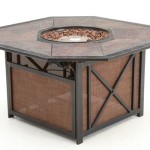Best Rated Patio Umbrellas: The Ultimate Guide
If you're looking to create a comfortable and inviting outdoor space, a patio umbrella is an essential investment. With so many options available, choosing the right one can be overwhelming. This guide will cover all the essential aspects you need to consider to find the best rated patio umbrella for your needs.
Size and Shape
The size and shape of your umbrella will depend on the size of your patio and the amount of shade you want to create. For smaller patios, a smaller umbrella with a diameter of 7-9 feet will suffice. However, for larger patios, you'll want an umbrella with a diameter of 10-12 feet or more. As for shape, round umbrellas are the most common, but square and rectangular umbrellas can also provide ample shade and a unique look.
Material
The material of your umbrella will determine its durability and resistance to the elements. The most common umbrella materials include:
- Acrylic: Acrylic is a synthetic fabric that is water-resistant, fade-resistant, and UV-resistant. It's a good choice for umbrellas that will be used frequently in sunny areas.
- Polyester: Polyester is a popular choice for patio umbrellas because it's affordable, water-resistant, and comes in a variety of colors. However, it's not as fade-resistant as acrylic and can deteriorate over time.
- Olefin: Olefin is a newer material that is highly resistant to fading, water, and mildew. It's a great option for umbrellas that will be exposed to harsh weather conditions.
Frame
The frame of your umbrella will determine its stability and durability. The most durable frames are made from steel or aluminum. Steel frames are heavier and more expensive, but they're the most durable. Aluminum frames are lighter and less expensive, but they're not as strong as steel. Some umbrellas also feature fiberglass ribs, which are strong and flexible and can withstand high winds.
Base
The base of your umbrella will determine how stable and secure it is. The most common types of bases include:
- Weighted bases: Weighted bases are filled with sand or water to weigh them down and prevent them from tipping over. They're the most stable type of base, but they can be heavy and difficult to move.
- Freestanding bases: Freestanding bases are not weighted and rely on their shape and design to stay upright. They're portable and easy to move, but they're not as stable as weighted bases.
- In-ground bases: In-ground bases are permanently installed in the ground and provide the most stable support for your umbrella. However, they require drilling and can be difficult to install.
Features
Some patio umbrellas come with additional features that can enhance their functionality and convenience. These features include:
- Tilt mechanism: A tilt mechanism allows you to adjust the angle of the umbrella to block the sun at different times of day.
- Crank or push-button opening: A crank or push-button opening makes it easy to open and close the umbrella without having to manually lift it.
- Wind vents: Wind vents allow air to pass through the umbrella, which reduces wind resistance and helps to prevent the umbrella from tipping over in high winds.
- UV protection: Some umbrellas offer UV protection to shield you and your guests from the sun's harmful rays.
Conclusion
Choosing the right patio umbrella can help you create a comfortable and inviting outdoor space. By considering the factors discussed in this guide, you can find an umbrella that meets your needs and enhances your outdoor experience for years to come.
The 11 Best Patio Umbrellas And Stands Of 2024

9 Best Outdoor Patio Umbrellas Of 2024 Top Picks

Best Cantilever Umbrellas 2024 Forbes Vetted

The 3 Best Patio Umbrellas And Stands Of 2024 Reviews By Wirecutter
The 11 Best Patio Umbrellas And Stands Of 2024
The 11 Best Patio Umbrellas And Stands Of 2024

The Best Patio Umbrellas In 2024 According To Experts Cnn Underscored

10 Best Patio Umbrellas For 2024 The Jerum Post

Best Patio Umbrellas For Your Outdoor Space 2024 Reviews Top Brands
The 11 Best Patio Umbrellas And Stands Of 2024








